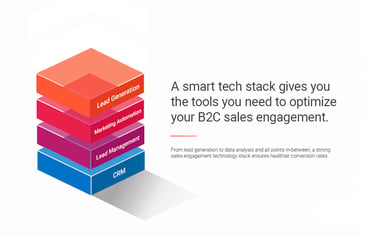The Golden Rules of Lead Management
Keeping these 4 rules in mind throughout the lead management process will insure your success.
A conversation today reminded me that not all lead buyers know exactly what to do to be a successful lead buyer. Pretty obvious statement really. We all have questions revolving around how to improve the lead management process and there are very few that have it perfected. The reality is that most companies have very different and unique processes that must be taken into account when applying best practices. Nevertheless, there is a core set of rules that every company should follow to be successful with managing their leads.
4 Golden Rules of Lead Management
Be Fast:
Keeping these 4 rules in mind throughout the lead management process will insure your success in the area of lead purchasing. We know that being successful with leads does not depend solely on the quality of each lead, but is equally dependent on how the leads are worked. The first rule has been preached by lead management companies for many years now and is backed up by a number of independent studies. The quicker you contact the lead, the higher likelihood you will have of closing the sale. The studies are out there and it has been drilled into our heads, but many buyers still overlook this extremely important factor. The dramatic effects that speed-to-lead has on the success of converting the lead is why I have it ranked as the most important factor for being successful with leads. You MUST be fast!
Be Smart:
Secondly, you need to be smart. What do you do after you receive the lead? What distribution rules do you have in place once the lead enters your system? Does it go to a call center? Depending on the criteria of the lead, will it go to a specific sales group? Simply receiving the lead and distributing it to a sales rep quickly should not be the only consideration you have in your lead management process. Think about what individuals or groups will best handle the type of lead arriving in your system. Be smart!
Be Nurturing:
Many companies fall into the trap of simply calling and qualifying leads, and not properly following up and nurturing the leads throughout the complete sales process. Unfortunately, some lead buyers rely on the return policies of their lead partner to excuse themselves of properly nurturing their leads. However, buyers should understand that not all leads are going to provide a quick answer and in many situations will initially be undecided. Don’t forget, the individuals that typically complete an online form are shopping. These prospects will require consistent follow-up prior to converting into a sale. I recently spoke with a buyer at a large national bank that told me a story about leads he converts over a year after receiving them. He does this through a simple, but long-term nurturing strategy. He doesn’t give up! He nurtures.
Be Analytical:
When it comes to lead buying, you can be as fast, smart and nurturing as you would like, but if you are not properly analyzing your KPI’s it will all mean nothing. I am surprised how some lead buyers continue to assume that they are doing everything right. Some place the blinders over their eyes and believe there is no room for improvement. Some of these buyers have chosen to hire employees to dial out on leads as soon as they come in and then transfer the leads to the “closers”. They have a makeshift lead management system that they created in-house that they believe is perfect. Unfortunately, they really are not sure how many times their leads have been called or if their leads are even being called. Additionally, they simply are not reporting their lead conversion data in real-time. The individuals that are managing the lead buying process are not provided with the right reporting options that are necessary to catch spikes in poor lead quality and/or they are not able to determine which leads are actually providing the highest return.
One could argue that having the proper set of reports IS the most important factor to lead buying success. What reports are essential you ask? Reports must be available on a daily basis. This does not mean, however, that you are looking at reports that only count daily conversion numbers. Reports that display conversions on a daily basis are typically not actionable. Month-to-date, weekly, specified data range reports should be available on a daily basis and are extremely actionable. Analyzing is important.
Top 4 Key Performance Indicators for Lead Buyers:
1. Conversion rate
2. Application or Appointment rate
3. Contact rate
4. Scrub rate – How many leads are being returned or marked as invalid
It is my opinion that all 4 of these KPI’s should be calculated off of the original valid lead count. For example, instead of calculating the conversion rate off of the application rate, lead buyers should calculate the conversion rate off of the total amount of valid leads that were purchased. The reason why I suggest this is because if you are calculating the conversion rate off of the application rate, your conversion rate number will look far more attractive then what it truly is. I see buyers doing this all the time and not communicating the correct conversion numbers to their lead vendors.
To be successful with buying leads, and to fully realize the benefits of using these “Golden Rules”, one must understand that they are not optional. They are mandatory! You can not implement just one rule, or a few rules. Take some time to evaluate your current lead management process and ensure that you are being fast, smart, nurturing, and analytical. Don’t be afraid to ask the industry experts about reporting best practices. Call the lead management experts in your space and request white papers or studies that could help you improve your own processes.
Good luck and be sure to follow the Golden Rules of lead management.



